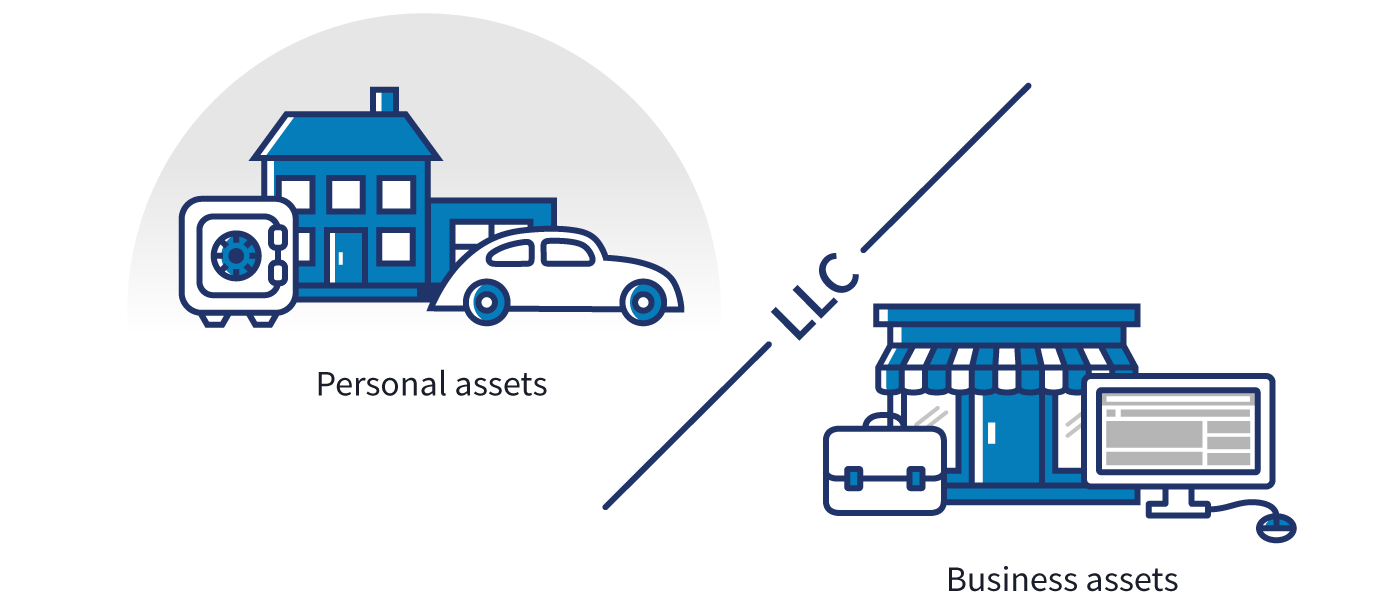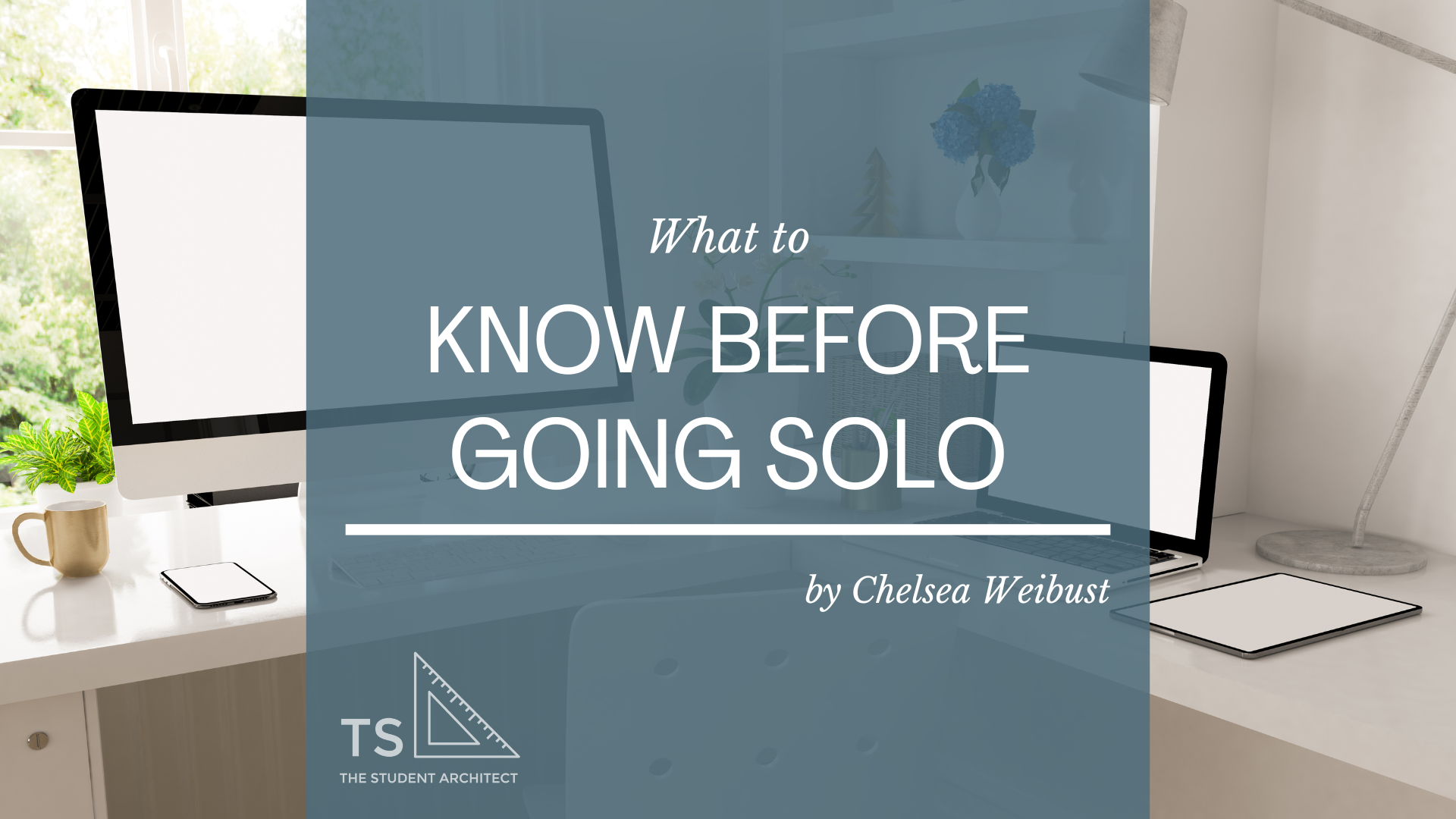by Chelsea Weibust
With the uncertainty of job security and safe working conditions brought on, in part, by COVID-19, it’s only natural to seek a working situation that you have more control over in terms of when you work, where you work, how you work, and what you work on.
Whether you’re looking to freelance, become a solopreneur, or start a small design business, these tips will help you start your journey on the right foot.
You may want to use this as a checklist or just a guide; either way, these are all tips I wish I had when I started freelancing and when I started my own design business. I hope that by sharing my experiences with you, you can learn from my mistakes and start off in a better place than I did, have access to more resources than I had, and be more knowledgeable than I was.
Disclaimer 1: I am not an attorney or an accountant and am not offering legal or financial advice. These are strictly my experiences and my opinions and I strongly advise the use of respective professionals for assistance in these fields of work.
Disclaimer 2: Some of the links below are affiliate links. Please understand that I have experience with all of the products I recommend, and I recommend them because they are helpful and useful, not because of the small commissions I make if you decide to buy something. Please do not spend any money on these products unless you feel you need them or that they will help you achieve your goals.
Okay! Now onto the fun stuff (and the not so fun stuff).
1. Set up an LLC
Credit: sba.gov
At a minimum, you’ll want to set up a Limited Liability Company (LLC) to protect yourself and your assets outside of your business. By doing this, if you happen to get into legal trouble, anything separate from your business will not be affected financially. Research and speak with an accountant to determine the best business structure for you. Meantime, here’s some light reading on the subject to get you started.
2. General and Professional Liability Insurance
From the moment you begin designing for a living under your own name or business, you should carry Professional Liability Insurance. Depending on your business and the policies you choose, you’ll be provided with a certain amount of coverage to protect you whether or not you’re at fault. If you have a physical office with employees, you should also carry General Liability Insurance. A helpful place to start looking for coverage is through the Freelancers Union, though there are plenty of other options out there.
3. Make sure you have a contract and terms & conditions
Credit: tenor.com
When I first started out, despite the many warnings from professors in school and professional practice books, I worked on projects without using a formal contract. I thought it would cost too much money to buy a contract template and didn’t really know where to look to get started so I continued on, unprotected. Luckily, for the first couple of years, I was able to skate by on verbal contracts and good faith but it took one disaster project to force me to get serious about running my business.
A formal contract and terms & conditions are really in everyone’s interest. It helps you, as the architect/designer to write out your understanding of the project, place parameters around the work involved, set expectations for the client, explain your fees and how to pay you, etc. Using a well-thought-out contract should significantly reduce the chance of surprises and your terms & conditions should describe what happens when additional scope is added throughout the project, excessive design changes are requested, what happens if the contract is terminated, etc. It serves as a guide as much as it does a legal document.
If a client is reluctant to sign a formal contract with you, run away! Contracts help weed out the tire kickers and will help you attract more serious clients.
If you work on larger architectural projects, you may want to use AIA contract documents/agreements as they are quite extensive and well known within the industry.
If you work on smaller projects, AIA contracts will likely scare your potential clients away. Luckily there are other options out there that are much less intimidating, such as the Hybrid Proposal between Owner/Architect* by EntreArchitect. You can always modify the documents for your needs such as working purely on an hourly basis, solely a fixed fee, etc. Just be sure to run it by a local construction attorney before using it to make sure it’s suitable for your needs and legitimate in your state/jurisdiction.
4. Careful use of the word “Architect”
If you’re not a licensed architect you cannot claim to be an architect or claim to provide architectural services.
Terms you can use to describe your title are: architectural designer, designer, drafter, draftsperson
Terms to describe services you provide are: residential design, building design, design
The same goes for interior design. If you’re not a certified interior designer you cannot call yourself one.
Terms you can use to describe your title are: designer, decorator, interior decorator, interior coordinator
5. Use accounting software
Something you may not have considered is all of the different aspects of your business that need tracking. You’ll need to start tracking your time, income, expenses, etc. and finding the right accounting software for your needs will save you lot’s of time, money, and headache. If you don’t have a background in accounting, have time to learn a new accounting software, and don’t plan to hire a bookkeeper right away, I suggest using a more simplified accounting service. I’ve found Freshbooks* to be perfect for my needs as a solopreneur with occasional independent contractors. Their focus is geared toward independent creatives and small businesses, people who want to spend more time working, and less time accounting. Freshbooks* has truly outstanding customer service (speaking from experience) and they are always adding new, useful features. They offer a time tracking feature for hourly projects, mileage tracking for travel, expense tracking, invoicing, accounting sheets, and so much more. The interface is very easy to understand so the learning curve here is minimal, and it can help you keep on track with your financial goals.
6. Get an accountant
Your accounting software helps you track your business, your accountant helps you with your taxes. (Yes, I know they do other things, too).
I learned a useful lesson the first year I began freelancing. After spending 6 hours sitting on my bed with piles of tax documents and worksheets scattered around me, I realized I needed to hire a professional. Getting audited was not something I had on my to do list so I figured, better to fork over a few hundred dollars to a professional who will do it right and work to save me money, rather than spend countless hours trying to figure out a profession that I will likely never fully understand and potentially find myself in trouble with the IRS.
Before freelancing I had always done my taxes myself, using Turbotax, as my finances were fairly simple. Things become a lot less simple once you start freelancing or owning your own business. Please save yourself hours of confusion, stress, and anxiety and hire a trusted accountant to handle your finances and estimate your quarterly taxes for you so you don’t get penalized for missed or underpayment. That brings me to my next tip.
7. Pay Estimated Quarterly Taxes
I for one did not know this was a thing when I first started freelancing. It was only once I started researching about freelancing and starting a business that I came across this miserable thing called “estimated quarterly taxes.” Like everyone else, I was accustomed to having my taxes automatically taken out of my paycheck before I even saw my pay stub so I never had to worry about it. Well, when you freelance or own your own business, nobody’s there to automatically take that money out anymore so you’ll need to pay your taxes in bulk on a quarterly basis.
Be sure to check the schedule, though it’s roughly the same every year:
Q1: April 15
Q2: June 15
Q3: September 15
Q4: January 15
When I first started, I estimated my quarterly taxes on a cash or collected based system, rather than a billed or accrual based system. That means you’re only paying taxes on the money you’ve earned during that quarter, rather than for the hours you’ve worked or amount you’ve billed during that quarter. A collected based system is best (in my opinion) when you’re just starting and may not have the buffer to cover the uncollected funds for your estimated taxes. The accrual or billed based system is best (in my opinion) when you do have the extra buffer so you won’t be stuck with a giant payment at the end of the year when it all catches up to you. Again, these are my opinions, and you’ll have to find the best method that works for you.
8. Stay organized
Staying organized can be easier said than done but developing healthy habits early on will set you up for success.
Organize your office (physical organizing)
To start, keep your desk and office space organized. Not only will this help you find things when you need them, but it will allow your mind to focus on your work rather than the mess around you. Here are some of the office accessories* I use to keep my space uncluttered.
Use labeled binders and folders to keep track of project files, tax information, resources, etc. If you have the space, file cabinets can help with this as well.
Organize your computer (digital organizing)
Digital clutter is becoming a huge problem so it’s helpful to have good organizational skills and habits early on to avoid losing files and creating a mess of a digital workspace. Consider organizing your project folders by using a specific set of sub-folders. I have my folders organized by year, then project, then a variety of subfolders within each project. Each project is given a project number, each client is given a code, and each project is given a unique title. For multiple projects with the same client, the client code would stay the same but project numbers and titles would differ.
Here are some examples of possible project folder naming conventions for different projects with the same client.
19002 SMR - Smith Residence - Bath Reno
20015 SMR - Smith Residence - Sunroom Addition
Then, each project folder has sub folders for things like correspondence, meeting minutes, property information, archived Revit files, etc.
Since there are many standard documents and folders needed for each project, I have a sample project folder with all of the sub-folders and template documents set up. When I start a new project I just make a copy of the sample folder, change the folder name, and then I have all of the documents I need to get the project going.
The professional way to organize your architecture projects.
📐 Upgrade your folder structure today—and stop wasting time searching for that one file.
9. Develop standard project management documents
I have a variety of documents that I’ve used for a few years but I came across this collection of 50+ business forms and checklists* from EntreArchitect that made a huge difference in my business. The time and energy it would’ve taken for me to create these documents myself would have cost more than 10 fold the cost to download them. Many of the forms and checklists I didn’t even know I needed and now I don’t know how I lived without them!
Having consistent fonts, colors, and branding throughout your forms, emails, checklists, website and drawings makes you look more professional and helps reinforce your brand.
10. Systematize your workflow
As soon as you systematize your workflow you’ll be able to spend less time trying to figure out what to do next, and more time working, finding your next client, or taking some well-deserved time off. Systems help you simplify, condense, and optimize your time.
When I talk about systems, I mean creating a step-by-step process for everything from your first contact with a client to your last contact with that client. You should have a checklist of outgoing and incoming documents, project management steps, quality control items (like an itemized drawing set checklist), etc. throughout the entire project so as soon as one item is checked off the list, you move on to the next. This is a great tool to establish to help you grow your team, set a standard of care for your work, and make sure nothing’s missed in the process.
To help make your business scalable and reduce the stress of bringing on employees, make your systems as clear as possible.
A great starter project management checklist can be found in the EntreArchitect 50+ business forms and checklists.*
You don’t need another course—you need a plan.
📋 This actionable workbook helps you organize your freelance goals, clients, rates, finances, and next moves all in one place.
11. Read some business books
I’m not asking you to become a business major but I truly believe in the benefit of reading and learning about creating and running a business. There are millions of books out there but these are some books that helped shape my idea of what a business could be, what my rights and responsibilities are as a designer and business owner, and how to achieve my personal business goals.
Rework - Jason Fried*
This is one of the first business books I ever read, recommended in a podcast by Jason Zook of Wandering Aimfully.* This book is a testament to the idea of keeping things small. Everyone always advocates for growth, getting larger, more this, more that. This book is a refreshing contradiction to those ideals, making a compelling argument for keeping things small, allowing you and your business to adapt easier and be more agile.
The Architect’s Handbook of Professional Practice - AIA*
I read this book to complete one of my ARE’s and I’m SO happy I did. I learned so much about the business of architecture, my responsibilities as a designer/architect, my rights as a designer/architect, things I am and am not responsible for, and so many other nuggets of wisdom. If you are an architect/designer in any capacity, I highly recommend reading this book.
Being Boss - Kathleen Shannon and Emily Thompson*
I absolutely love the Being Boss ladies. When I worked at an architecture firm a few years ago, I would spend my hour-long commute listening to Kathleen and Emily’s podcast, Being Boss, dreaming about someday owning a business of my own and being so thankful that I had two truly boss ladies to learn from. They have since written a book together, by the same name. I have yet to read it but I imagine it embodies much of the same brilliance, wisdom, and magic that emanates from their podcast.
12. Listen to business podcasts / audiobooks
I get it, not everyone likes or has time to read. There’s a lot to be gained from listening as well. Whether it’s audiobooks or podcasts, the important thing is to absorb as much as you can so you can make informed decisions about what aligns with your values and your vision for how you want to present yourself and run your business.
Being Boss - Kathleen Shannon and Emily Thompson
Again, I can’t promote these ladies enough. They inspired me to pursue my own dream and made it seem tangible by showing me it was possible for women to be successful in male-dominated industries. For any parents out there that want to give homeschooling a go, Emily and her husband teach their daughter from home which opens up their day, allowing them to make a schedule that works for them so they can travel whenever they want (she speaks to this occasionally throughout the podcast). This podcast started out as two business owners discussing their business relationship together and grew into so much more than that. I highly recommend a listen.
Smart Passive Income - Pat Flynn
Pat Flynn was another podcaster I found myself listening to during my commutes to and from work. If you’ve never heard of Pat Flynn, he’s a brilliant entrepreneur who makes it his life work to help others succeed in starting their own business or creating some form of passive income. In his podcast, he shares his seemingly endless entrepreneurial wisdom, interviews fascinating guests, and answers questions.
Fun fact: before becoming an entrepreneur, he worked in architecture!
13. Join online communities / forums
Freelancers Union
The Freelancers Union offers a variety of resources for freelancers and the self-employed. Best of all, it’s free! They have been advocating for freelancers and the self-employed since 1995 and help connect individuals with different types of insurance such as liability, health, dental, etc. I enjoy their newsletter that keeps me in the loop on freelance tips, news, and resources.
architect community like EntreArchitect*
A community catered just to architects/designers can be very beneficial to learn more about the industry, ask questions from seasoned architects, make connections, and offer your own help to others. Everyone has something to offer whether it’s business tips, software recommendations, client relationship tips, etc. When I first joined EntreArchitect, I immediately saw the value in joining a community of people within the industry and highly recommend joining an architect central community for those just starting out as well as those with a few decades of experience under their belt. It’s never too late to learn something new!
WANDERING AIMFULLY COMMUNITY*
You may have noticed a trend that I like to expand my knowledge and my bases outside of the world of architecture. I think it’s important to look beyond the architecture industry and learn from other types of entrepreneurs, independent creatives, and people/businesses within unrelated fields. This helps you bring something different to your business from what all the other architecture firms are doing. The Wandering Aimfully community is a collection of like-minded entrepreneurs who share their journeys, learn from each other, and offer advice. The community is run by two creative entrepreneurs who like to shake things up and do things differently. They also provide tons of resources like courses, worksheets, and live coaching.
14. Set yourself up for success
Surround yourself with successful people
This is a big one for me. I know, at least for myself, whatever I surround myself with is what I become. This translates from diet, to exercise, to habits, to mood, to motivations. Maybe I’m more susceptible to my environment than others, but I think there’s something to be said about how your environment can shape you as a person. When I surround myself with creative minds and ideas, I can feel the creative juices flowing within me. It’s important to have people around you who will lift you up, encourage you, and support your goals rather than people who continually criticize or tear you down.
Surround yourself (physically or virtually, actively or passively) with the types of people you want to become, and someday, with discipline, good choices, and showing up, you will get there.
Create an environment that you can thrive in
If you’re trying to follow a healthy diet, don’t keep a bunch of junk food in the house, otherwise, you’re setting yourself up for failure. Don’t tempt yourself with things that are going to set you back and try to set yourself up with good decisions that are easy to make. Instead of forcing yourself to choose between a donut and a kale salad, maybe you can make your life easier by giving yourself two “right” options to choose from, rather than one right and one wrong. (Anyone else getting hungry?)
This same idea can be carried over to how you run your business and, quite frankly, live your life.
Set tangible and achievable expectations and work one step at a time
When you’re just starting out, it’s easy to start comparing yourself to those who are already where you’re trying to get to and find yourself defeated before you’ve even begun. It’s important to remember that the people you look up to took a long time and a lot of hard work to get to where they are and you can’t forget that at some point they were exactly where you are now.
Setting unrealistic goals for yourself can lead to burnout and will be discouraging if you fail to reach your goals within the parameters you’ve set.
When I make checklists for myself, I break down every task into a bunch of smaller tasks. I do this so I can feel good about crossing things off the list. It helps me feel like I’m making progress and encourages me to move forward.
Another factor to consider is imposter syndrome/phenomenon. Imposter syndrome is real and I believe everyone feels it at some point. It’s important to decipher if what you’re feeling is lack of confidence, doubt in your competence, or if you’re actually way in over your head.
If you’re feeling slightly overwhelmed from being in unchartered territory, then seek advice from some seasoned architects, either locally or online, and just keep pushing forward. You may even consider reaching out to your old professors. Typically I’ve found that architects are more than happy to share their knowledge and experiences with other architects/designers.
If you’re completely in over your head, you may need to reevaluate and take a step back. Maybe the project you’re working on is too complex for you at the moment, maybe the client is expecting more than you can provide, etc. If this is the case for you, just take a breath, evaluate your situation, and start on a new path that you’re more familiar with.
One of my first projects was with a first time developer who needed A LOT of guidance. Not only was he located across the country from me, but he had big plans of developing multiple lots of land with multi-family housing units. He had no developing experience, no building/construction connections, and no construction knowledge. I jumped at the chance to work on the project because I was having trouble finding work and I was excited about the possibilities. I had designed multi-family townhouses before but had never lead a project of that scale and didn’t have much experience with the administrative side of architecture. It was a lot for me to take on all at once and only took me a couple of weeks to realize that we were nearing dangerous territory with two amateurs taking on such an ambitious project from opposite sides of the country. I ended up writing to my client explaining that I thought it was in everyone’s best interest to part ways on the project and suggested he find a local architect with more experience in what he was looking to do. It was a hard decision to make but I’m so happy I did.
It’s important to be able to discern when you should push through and when you need to walk away. In the moment, it may feel like the world is ending and you’ve made a horrible choice venturing off on your own, but if you can remain calm and seek other opportunities that fit more within your realm of expertise, it will all work out.
If you want more work freedom but aren’t ready to start your own design business, consider becoming an independent contractor or freelancer with other architects or designers where you can have more flexibility with your pay and work schedule but not have to assume the role of a business manager and all that goes along with it. This is the path I took and it really helped me ease into creating my own design business.
Take your business adventure one step at a time to set yourself up for a sustainable future.
Choose your own definition of success
Someone else’s definition for success can be different from your own. Don’t let other people’s judgement and opinions dictate your decisions or influence your calculated self-worth, especially if their personal values and beliefs differ from your own. If an outside opinion thinks a successful business requires multiple offices with hundreds of employees and a successful life means having a huge house filled with lots of stuff, but all you want is a 3 person firm where you get to work from your tiny home filled with a limited number of curated items, then listen to your gut and follow the path that will bring you to your version of success.
Guesswork doesn’t pay the bills. Strategy does.
🧠 Plan, track, and compare your project profits with the Project Profit Planner.
15. Go easy on yourself
Starting a business and going off on your own is both daunting and exciting. You’re wandering into a world of unknowns, venturing down a path that’s entirely your own. Like with anything, it’s going to take some time to get into a groove and find your way. I’m 3 years into my journey and I’m still finding my way.
It’s important to be flexible and be open to change. If you find that something’s not working for you, make a change. Start over the next day and try something new but be kind to yourself and appreciate that this is a process, you’re learning, and it will get easier.
Remember that every day is a new day, every minute is a new minute, every second is a new second. You can choose any moment in time to reflect, reset, and make a change for the better.
If you’ve been reading my tangents for each tip, you’ve probably noticed that my greatest moments of growth have come from my many times of failure. I share my stories and experiences so you can see that I was once just like you, sitting where you sit right now. It’s okay to fail and make mistakes because that’s how you learn. I hope that by sharing my experiences with you, you can learn from my mistakes and start off in a better place than I did, have access to more resources than I had, and be more knowledgeable than I was.
As always, good luck in your endeavors, and feel free to leave me a comment if you have questions.
Enjoy the process!
Credit: tenor.com
♥ Chelsea



























Thinking of leaving the structured world of an architecture firm to go solo? The transition from employee to business owner is a big shift—personally and professionally. Here are five major changes you’ll experience (and grow from!) when you trade firm life for freelancing or running your own design studio—plus tools to help you thrive along the way.